
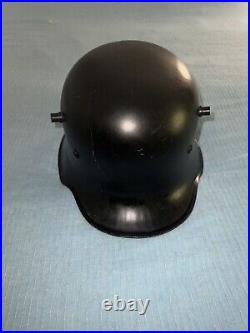
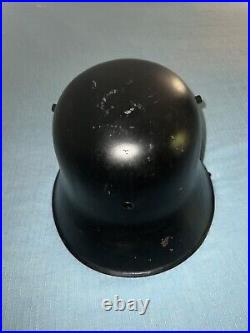
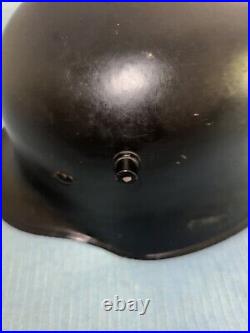
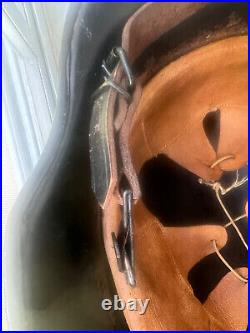
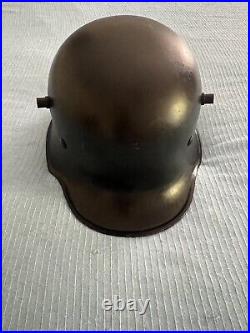
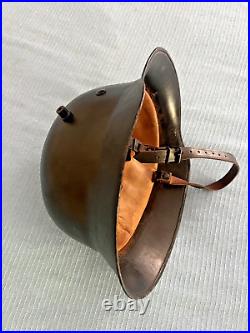
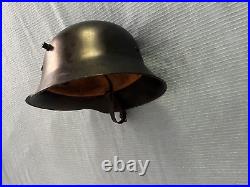

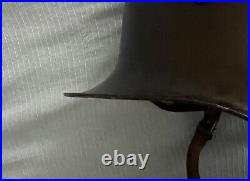
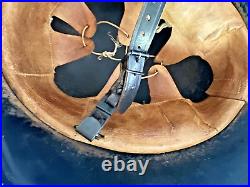
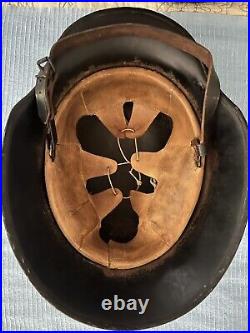
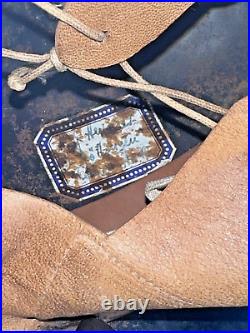
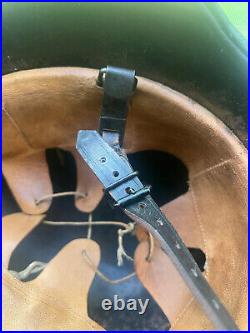
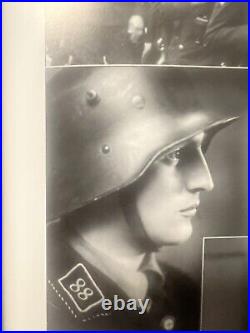

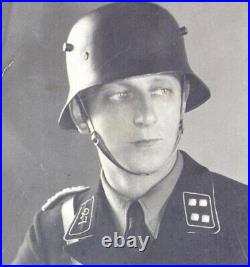
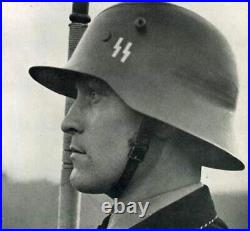

This is a rare Model 1933 helmet, for the early Schutz Staffel, so called “Transitional” or “Commercial”, in original black paint. In 1933 the quick expansion of the Schutz Staffel, or Protection Squads or Political Soldiers created a big demand for helmets. And that was quite a challenge for early administrators with that responsibility. The first attempts were to draw from stocks left over from WW1, the Reichswehr, the Freikorps and other squads, even Austrian and Hungarian helmets from WW1. Due to the rapid expansion, that effort was not enough. Multiple factories were contracted to produce a helmet very similar to the M18 or M17, with various type of liner variations of the WW1 models. It was only in 1934 that the National Ordnance Ministry issued the first uniform regulations. Factories that were contracted were ordered to produce and deliver them in black color. It was up to the the soldier or his unit to put, actually paint the decals. This was done in a variety of shapes. Many didn’t bother as one can see on the pictures of those early SS formations. In the early days the procurement system was “as needed”. Not at all comparable with the sophisticated, consistent, complex and huge procurement of the Model 1935 onwards. I bought this helmet from Hermann Historica, Munich, about 25 years ago. The name of the soldier, as you can see on one of the pictures of the helmet, is written on a label attached inside to the right side of the helmet. I never even tried to read the name. I’ll leave that to the new owner. I just made sure that I didn’t damage it when I would dust the helmet from time to time. It was always in a covered shelf with other helmets of my collection. Never handled it too much, or played with it, kept it always in a covered shelf. I would strongly suggest you do the same. Its is in pristine condition for its age, the leather parts are in a very pliable condition. This helmet is a must for any serious collector of helmets. It has 2 liner cushions on both sides similar to the WW1 types, but not on the front. I could not see any markings or numbers on the shell. At least I didn’t find them. I would say that the shell is a 64 and the liner size 57. It would be a very hard task to find anything in better condition than this perfect example of the early uniforms.
